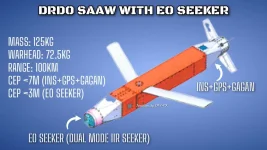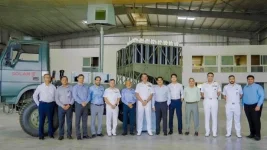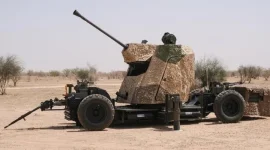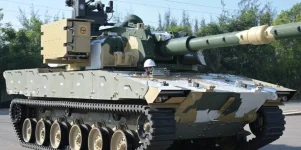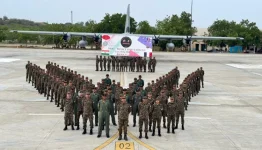The Indian Army is significantly strengthening its artillery firepower with the planned induction of six additional Pinaka Multi-Barrel Rocket Launcher (MBRL) regiments by the end of 2026.
This move will bolster military preparedness along the frontiers with China and Pakistan and marks a crucial step in replacing obsolete Soviet-era BM-21 Grad systems with a formidable indigenous alternative.
This expansion will raise the total number of Pinaka regiments to ten, with four already deployed along the Line of Actual Control (LAC) and the Line of Control (LoC).
The accelerated induction is part of a strategic push to modernise the nation's artillery arsenal, prompted by heightened border tensions, particularly following the Galwan Valley clash in June 2020. This incident served as a catalyst for enhancing India's deterrence and offensive capabilities against regional threats.
The project is driven by a Rs 2,580 crore contract signed in August 2020 with a consortium of Indian defence manufacturers, including Bharat Earth Movers Limited (BEML), Tata Power, and Larsen & Toubro (L&T).
This initiative is a prominent example of the 'Atmanirbhar Bharat' (Self-reliant India) policy in the defence sector, showcasing the successful collaboration between the Defence Research and Development Organisation (DRDO), which designed the system, and private industry partners responsible for its production.
The Pinaka system represents a major technological leap over the BM-21 Grad launchers it is replacing.
Developed by DRDO, the Pinaka is an all-weather, indirect-fire rocket system known for its high mobility and rapid, high-volume saturation fire. A single Pinaka launcher can fire a salvo of 12 rockets in just 44 seconds, capable of neutralising a target area of approximately 1000m x 800m.
The system's variants can engage targets at ranges from 38 km to over 75 km for the extended-range versions, with future developments aiming for even greater distances.
Its "shoot-and-scoot" capability allows the launch vehicle to relocate quickly after firing, enhancing its survivability against counter-battery fire.
Progress on the induction is proceeding at a swift pace. A defence official confirmed the current status, stating, "Out of the six regiments, two have been raised and deployed. We have received equipment for two more regiments, and the training of soldiers will begin soon."
The delivery of launchers for the final two regiments is anticipated by late 2025 or early 2026, ensuring the project remains on schedule. This steady induction underscores the Indian Army's commitment to rapidly enhancing its operational readiness in both the northern and western operational theatres.


